
[214] Lotus corniculatus, Bird’s-foot Trefoil
Introduction
Lotus corniculatus, (Common) Bird’s-foot (or Birds-foot or Birdsfoot) Trefoil, is a common and widespread wildflower. Its flowers are all bright yellow but as they emerge the buds are red.
Its other common names include Birdsfoot Deervetch and Eggs and Bacon (a name sometimes used for other plants.).
Other species of Lotus may also be called Bird’s-foot Trefoil.
Greek and Roman mythology include a Lotus Tree of unknown type and the sacred lotus of India is Nelumbo nucifera, which looks similar to a Water Lily but is not closely related.
Taxonomy
Kingdom – Plants
Division – Vascular Plants
Class – Angiosperms (Flowering Plants)
Order – Fabales
Family – Fabaceae
Subfamily – Faboideae
Clade – Robinioids
Tribe – Loteae
Genus – Lotus
Scientific Name – Lotus corniculatus
Name
Bird’s-foot comes from the shape of the emerging group of buds.
The word trefoil is used for types of [343] Clover with the Latin genus name Trifolium, which is cognate. It means, of course, three-leaves. Whereas clover has genuine three-part leaves, the lotus has five – see text.
Lotus come from the Ancient Greek lotos, the name of a plant. As for many plant names, nobody really knows what type of plant the Greeks called lotos and there may have been several different ones.
The Latin corniculum is a diminutive of cornu, ‘horn’relating to the shape of the emerging buds,
Description
Lotus corniculatus is a straggling, low growing wildflower that may go unnoticed when not in flower.

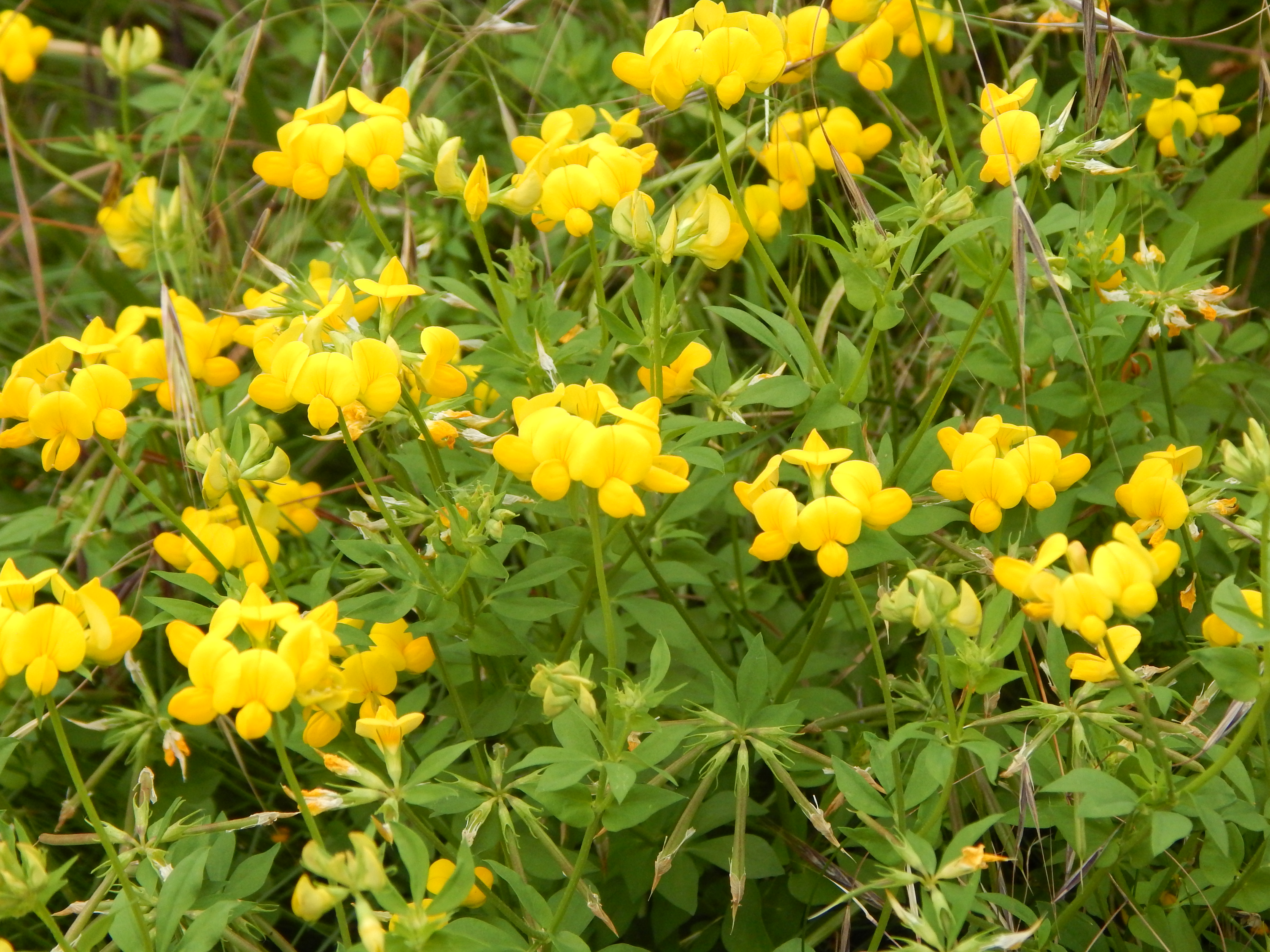
Despite its name the leaves actually have five leaflets, but the central three are often held higher than the lateral ones, giving the appearance of a trefoil.
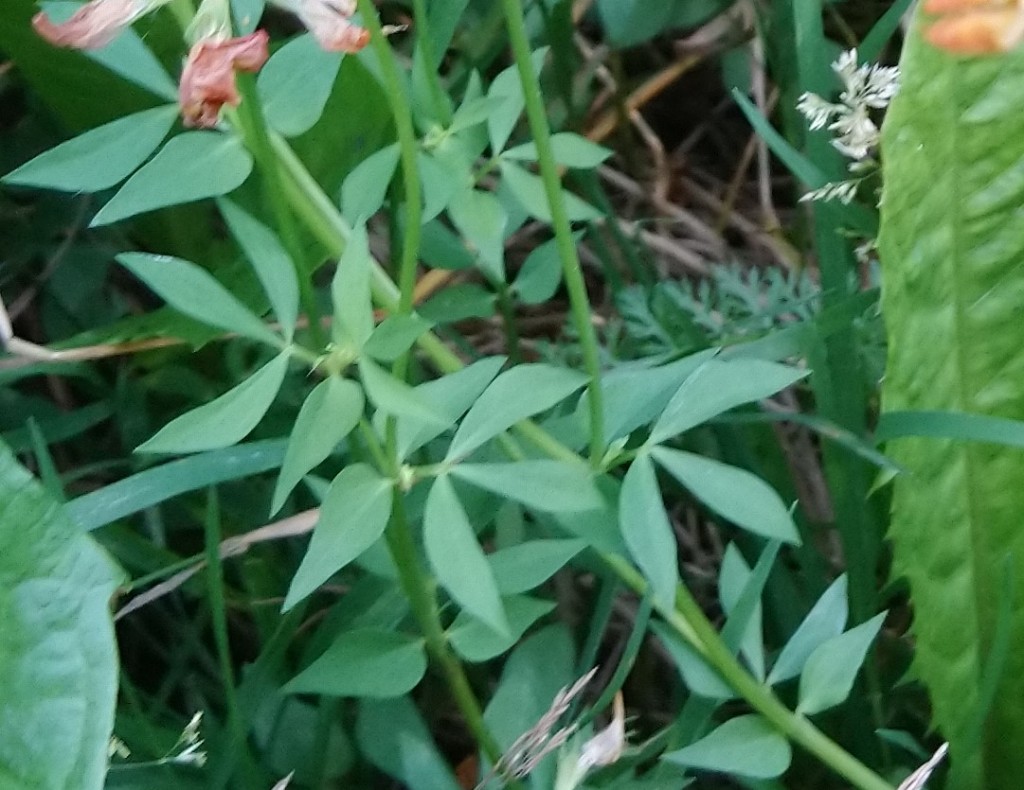
In spring it is covered in lots of small bright yellow flowers. The buds start red and soon go through orange to red as the flower opens.



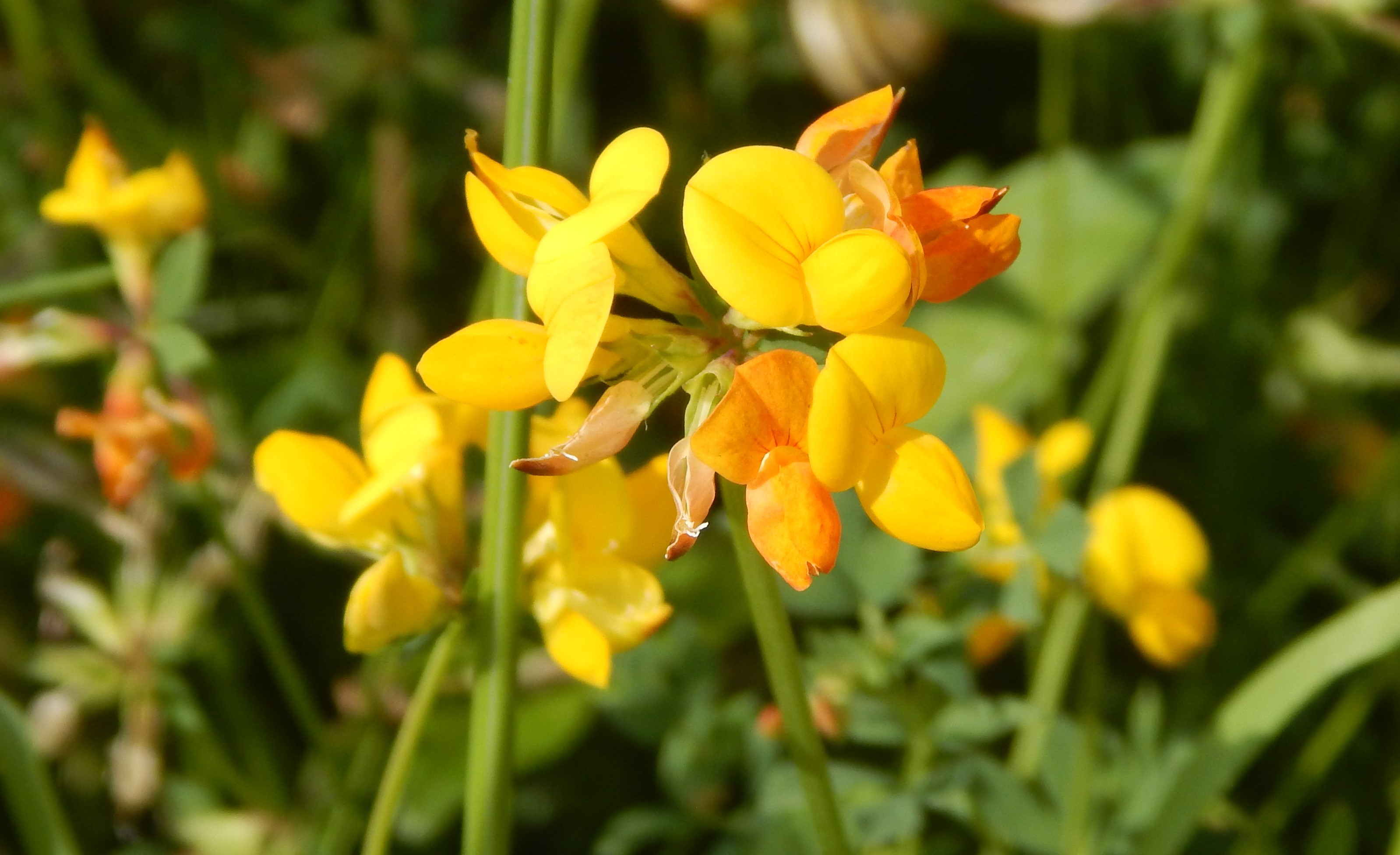
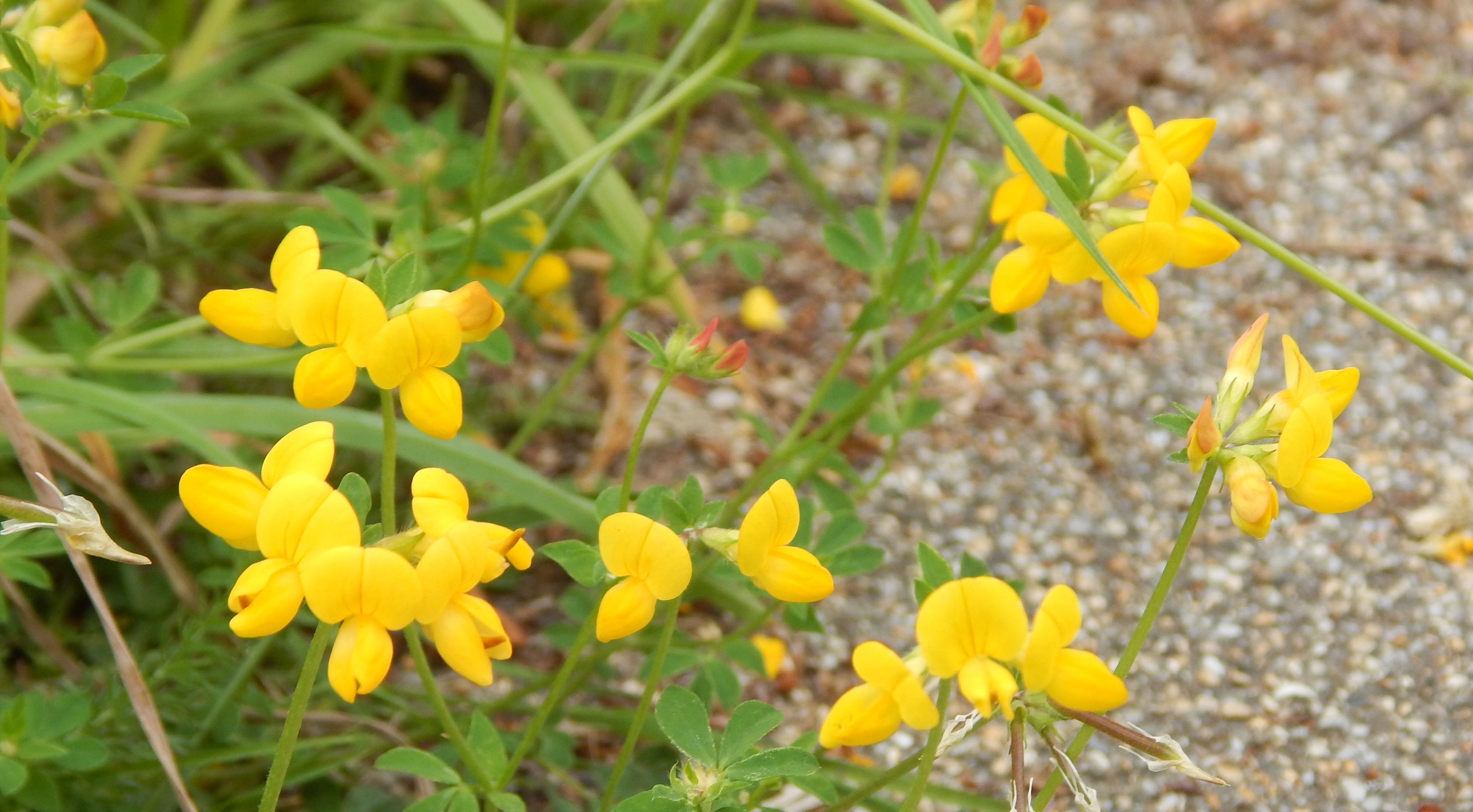
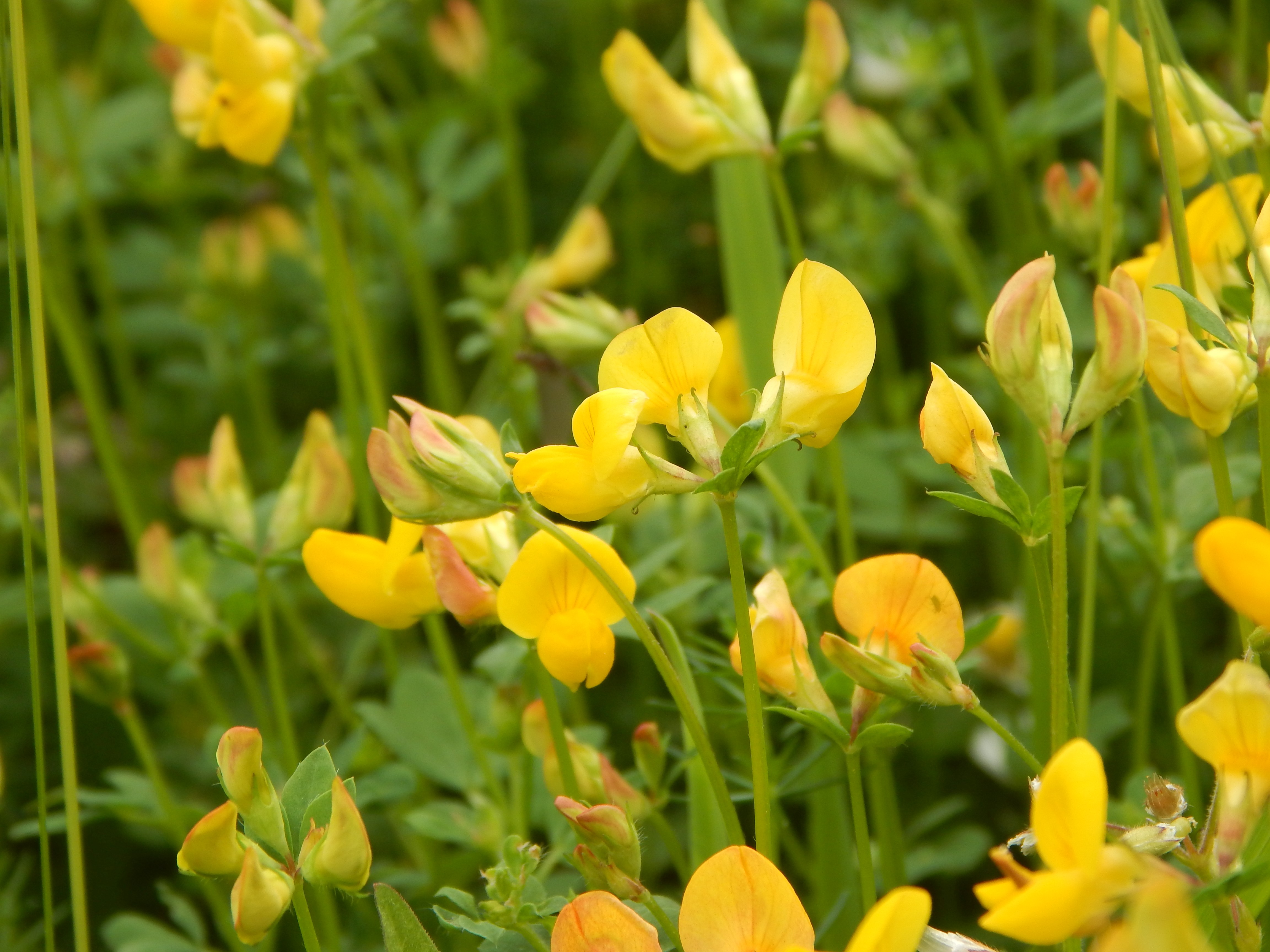
Habitat and use
Lotus corniculatus is found throughout temperate Eurasia and in Northern Africa. It is common and widespread in grassland and roadside verges.
It has been used in agriculture for pasture, hay and silage. (See also the next section.)
Lotus corniculatus has many varieties for garden cultivation, which can be small shrubs or trees.
Nitrogen Fixation
This won’t be a detailed lesson in science – just a quick summary. Nitrogen fixation is an important part of the biochemistry of life. I remember being taught about it at school (a long time ago.)
Many of the organic compounds that make up life contain nitrogen and it comes from the air which is 80% nitrogen. But most organisms cannot use pure nitrogen directly as a source as the gas is almost inert.
Nitrogen can be converted to ammonia, NH3, by some microorganisms at the levels of bacteria, and this allows it to be absorbed by plants. Some of these organisms live in the soil but significant nitrification comes from specialist bacteria that live in the root systems of legumes (all members of the family Fabaceae, producing pod-like fruits.) The bacteria form nodules on the roots that help the plant to grow. Clover, alfalfa, lupin and peanut are important agricultural plants in this process.
From the Middle Ages, agriculture in Europe used a three-field rotation system for agriculture. Arable crops that take nitrogen from the soil in the first year were followed by legumes in the second year to produce nitrogen, with the fields lying fallow for the third year. At any time, a farmer might have his land divided into three sections – one of each type.
Modern agriculture allows repeated monoculture without the need for crop rotation – aided by the extensive use of fertilizers. Most agricultural fertilizers provide nitrogen in a usable form. (Some provide phosphorus, potassium or a mixture.)
As noted, this is relevant for all members of the family Fabaceae.
See also
See [198] Sweet Pea, another leguminous plant.
